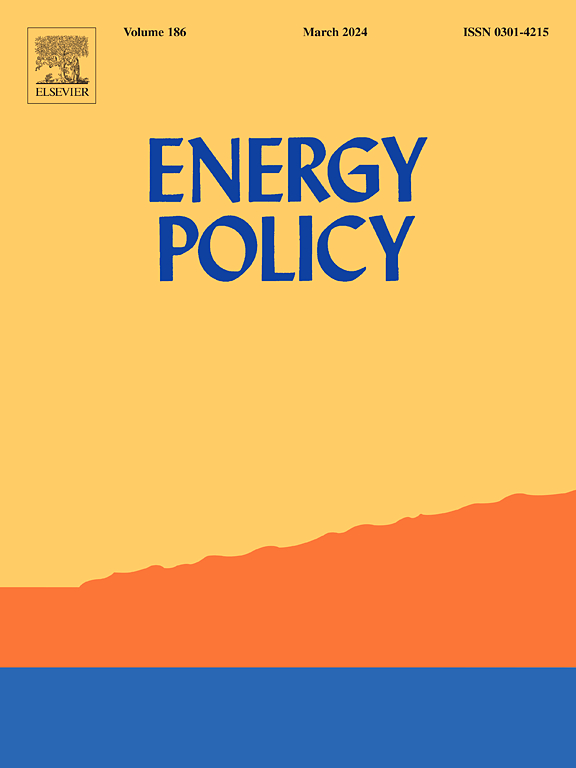住宅供暖脱碳:推动热泵吸收的地方条件和空间溢出效应
IF 9.2
2区 经济学
Q1 ECONOMICS
引用次数: 0
摘要
空气源热泵是住宅供暖脱碳的主要手段。是什么推动了当地对热泵的吸收?我们提出并研究了一个独特的、高度分解的、时空数据集,用于2010年至2020年英国各地地方政府层面的热泵扩散。我们发现平均总安装成本为1075英镑/千瓦,负学习率为- 3.3%,大多数安装在业主自住的房屋中。使用空间计量模型,我们调查了当地条件如何驱动热泵安装。我们发现,早期采用该技术的地区往往是农村地区,远离天然气网,事先使用固体燃料或石油供暖,并参与可再生能源和社区能源项目。早期采用该技术的地区受益于更容易获得的物业、低碳能源技能和当地供应链。我们发现了空间溢出效应的有力证据,表明早期采用区域充当了部署测试平台,间接刺激了相邻区域的部署。我们认为,空间溢出是由安装人员的可用性和围绕安装活动实现的当地供应链驱动的。我们估计,每安装三台热泵,就有一台热泵随后被安装在邻近条件不太有利的地方当局。这意味着在实现效率最大化(激励早期采用者)和扩大获取平等(支持后期采用者)之间,要在低碳热方面做出重要的政策权衡。还迫切需要采取协调一致的政策行动,解决分散的供应链和技能短缺问题,这些问题导致热泵的安装成本相对于燃气锅炉过高。本文章由计算机程序翻译,如有差异,请以英文原文为准。
Decarbonising residential heating: local conditions and spatial spillovers driving heat pump uptake
Air source heat pumps are the principal means of decarbonising residential heating. What drives local uptake of heat pumps? We present and examine a unique, highly disaggregated, spatial-temporal dataset for heat pump diffusion across Great Britain at the local authority level from 2010 to 2020. We find average total installed cost of 1075 £/kW and a negative learning rate of −3.3 %, with most installations in owner-occupied houses. Using spatial econometric models, we investigate how local conditions drive heat pump installations. We find early adopting local areas tend to be rural, off the gas grid, with prior use of solid fuel or oil for heating, and participate in renewable and community energy projects. Early adopting areas benefit from a combination of more readily accessible properties, low-carbon energy skills, and local supply chains. We find robust evidence of spatial spillover effects that show early adopting areas serve as deployment test beds, indirectly stimulating deployment in contiguous areas. We reason that spatial spillovers are driven by installer availability and local supply chains materialised around installation activity. We estimate for every three heat pumps installed, one heat pump is subsequently installed in a neighbouring local authority with less advantageous conditions. This implies an important policy trade-off for low-carbon heat between maximising effectiveness (incentivise early adopters) and widening equality of access (support later adopters). Concerted policy action to tackle fragmented supply chains and skills shortages which inflate installation costs of heat pumps relative to gas boilers is also urgently needed.
求助全文
通过发布文献求助,成功后即可免费获取论文全文。
去求助
来源期刊

Energy Policy
管理科学-环境科学
CiteScore
17.30
自引率
5.60%
发文量
540
审稿时长
7.9 months
期刊介绍:
Energy policy is the manner in which a given entity (often governmental) has decided to address issues of energy development including energy conversion, distribution and use as well as reduction of greenhouse gas emissions in order to contribute to climate change mitigation. The attributes of energy policy may include legislation, international treaties, incentives to investment, guidelines for energy conservation, taxation and other public policy techniques.
Energy policy is closely related to climate change policy because totalled worldwide the energy sector emits more greenhouse gas than other sectors.
 求助内容:
求助内容: 应助结果提醒方式:
应助结果提醒方式:


